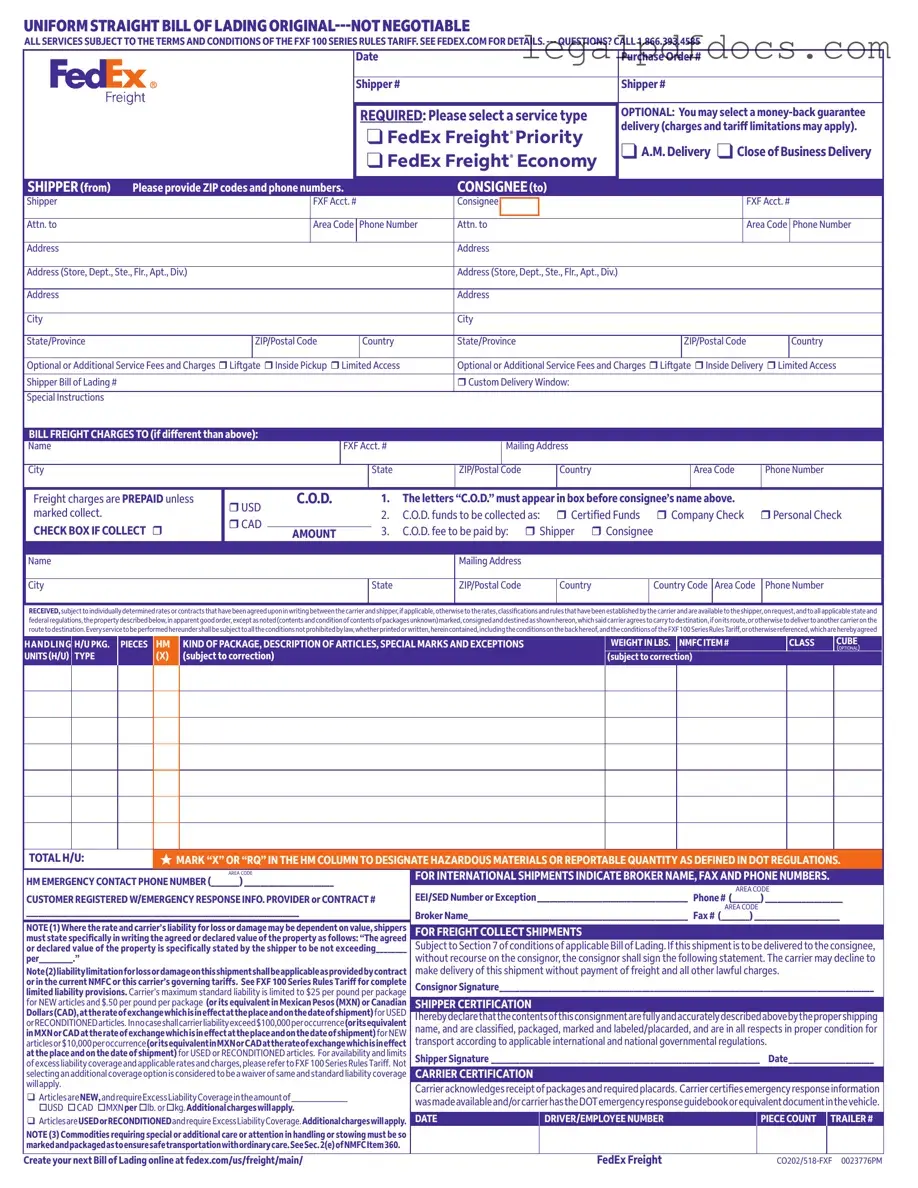The FedEx Bill of Lading form is an essential document for anyone shipping goods through FedEx Freight. This form serves multiple purposes, acting as a contract between the shipper and the carrier while also providing crucial information about the shipment. It includes fields for the shipper's and consignee's details, such as names, addresses, and contact numbers, ensuring that all parties are clearly identified. Additionally, the form allows you to select service types, like FedEx Freight Priority or Economy, and optional services, including liftgate or inside delivery, which can enhance the shipping experience. Understanding the terms and conditions outlined in the FXF 100 Series Rules Tariff is vital, as they govern the shipment and any associated charges. Special instructions can also be noted, and if your shipment involves hazardous materials, there are specific sections to indicate this. The form ensures that freight charges are clearly defined, whether they are prepaid or collected upon delivery. By providing accurate information and adhering to the guidelines, you help ensure a smooth shipping process while protecting your interests and those of the carrier.
